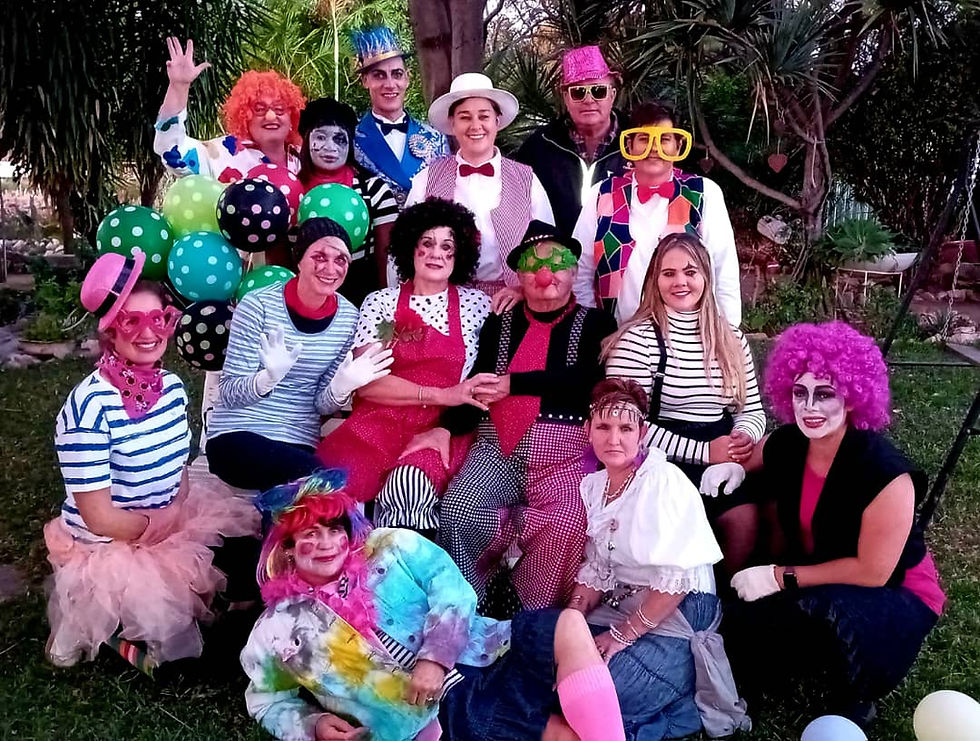Fun Facts About Your 067 Valley
- 067triangle
- May 30
- 3 min read
GROOTFONTEIN
Hoba Meteorite – Earth’s Largest Intact Meteorite:Grootfontein is home to the Hoba meteorite, the largest known single-piece meteorite ever discovered on Earth. Weighing about 60 tonnes, it consists primarily of iron and nickel and fell to Earth around 80,000 years ago. Despite its enormous size, it left no crater—scientists believe this is due to its shallow entry angle and the Earth’s atmosphere slowing it down.
Dragon’s Breath Cave – Gateway to an Underground Lake:Just outside Grootfontein lies Dragon’s Breath Cave, named for the humid air that "breathes" from its entrance. Below its surface lies the largest known underground non-subglacial lake in the world. This mysterious lake, located about 100 meters underground, is so deep and inaccessible that it has never been fully mapped or explored by divers, adding to its allure.
TSUMEB
Tsumeb Mine – A Mineralogist’s Paradise:The now-closed Tsumeb mine is world-renowned for its extraordinary diversity of minerals, including more than 200 different mineral species. At least 40 minerals were first identified here, making it one of the most mineralogically significant sites on the planet.
Guinas and Otjikoto Lakes – Namibia’s Only Permanent Natural Lakes:The Guinas and Otjikoto Lakes, located near Tsumeb, are collapsed dolomite sinkholes and among Namibia’s few permanent natural bodies of water. Both are believed to be connected underground, and Guinas is home to the rare cichlid fish species, Tilapia guinasana, found nowhere else on Earth.
KOMBAT
Kombat Mine – Too Much Water for Comfort:Kombat is famous for its high water table, making it one of the few mines where dewatering (pumping out groundwater) is a constant operation. If left unchecked, underground flooding would halt mining completely. This unusual challenge highlights the abundance of groundwater in the region—rare in much of Namibia’s arid zones.
OTJIWARONGO
Paresis Mountains – Geological Backbone of the North:The Paresis Mountains, just west of Otjiwarongo, form part of a unique geological feature rich in volcanic rock and iron-rich soils, contributing to the region’s agricultural fertility. The mountains are also remnants of ancient volcanic activity tied to the Etendeka Flood Basalts, part of a vast prehistoric lava flow.
Cheetah Capital of the World:Otjiwarongo is often referred to as the cheetah capital of the world due to its proximity to the Cheetah Conservation Fund (CCF), a globally renowned research and rescue center. This area is home to one of the largest remaining wild cheetah populations on Earth.
OTAVI
Otavi – Namibia’s Grain Hub:Otavi hosts some of the largest grain silos in Namibia, owned by Namib Mills, which store and process a major portion of the country's maize harvest. Due to its higher rainfall and fertile soils, the Otavi Triangle is the country’s most productive dryland crop region.
Karst Landscape and Underground Rivers:Otavi lies in a karst region, characterized by limestone formations, sinkholes, and underground drainage systems. This unique terrain creates natural caves and aquifers, offering not only scenic beauty but also key groundwater reserves for agriculture and domestic use.
OUTJO
Gateway to Etosha and Petrified Forests:Outjo is more than just a gateway town to Etosha National Park. The region is rich in ancient fossilized wood, with nearby sites containing 200-million-year-old petrified trees, offering a glimpse into Namibia’s distant, forested past.
Volcanic Rock Formations and Termite Mounds:The soils around Outjo originate from ancient volcanic activity, giving rise to nutrient-rich conditions and supporting enormous termite mounds—some of the tallest in the world—making it a hotspot for ecological study.





















Comments